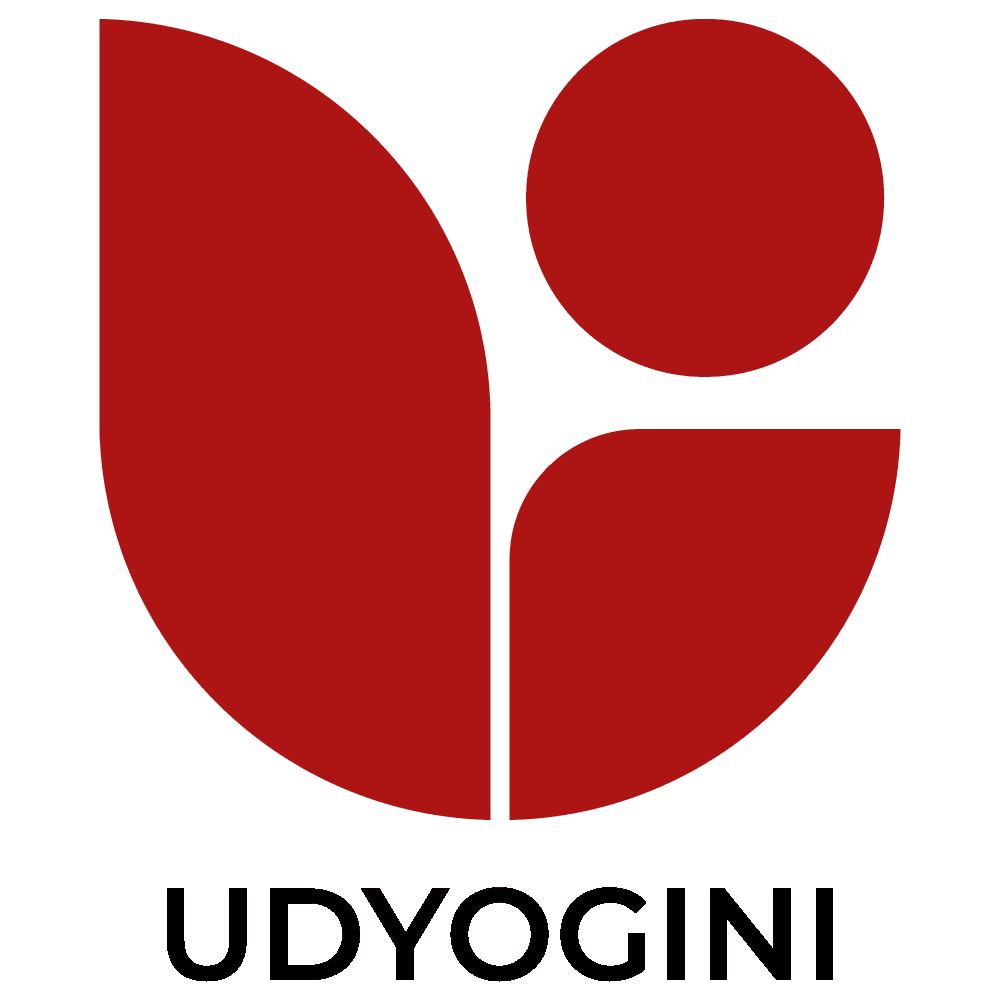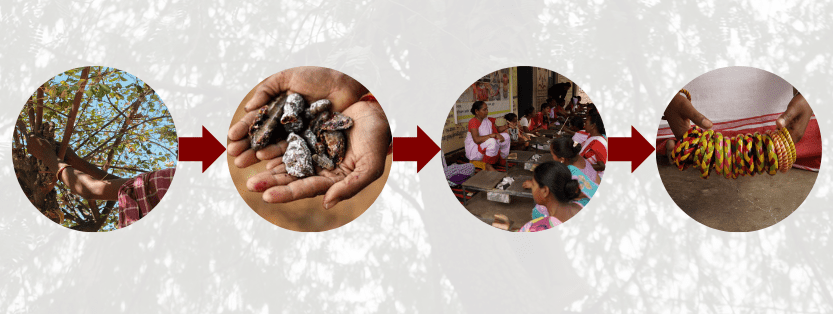In the verdant landscapes of Jharkhand, a quiet revolution has been taking place. This revolution isn’t about technology or politics; it’s about a natural resin known as lac, and how communities have harnessed it to create livelihoods, drive economic growth, and foster empowerment. The journey of lac, from its humble beginnings in cultivation to its transformation into valuable products, is a story of innovation, resilience, and the unwavering spirit of rural entrepreneurs.
In the heart of Jharkhand, lac cultivation has long been a way of life, deeply woven into the fabric of rural communities. However, this traditional practice, once limited by outdated methods and minimal market reach, has been revitalized through strategic value chain interventions. These interventions have not only increased the income of individual farmers but also spurred community-wide economic growth, showcasing the immense potential of value addition.
Lac cultivation, deeply rooted in Jharkhand’s agricultural practices, involves nurturing lac insects on host trees like Kusum, Ber, and Palash. Traditionally, this process was labour-intensive, with farmers relying on age-old techniques passed down through generations. While these methods were effective in producing raw lac, they did little to maximize the potential of this versatile resin in the broader market.
Recognizing the untapped potential of lac, value chain interventions were introduced to enhance every stage of its production. These interventions began with the most fundamental aspect—cultivation. By integrating modern agricultural practices and scientific knowledge, farmers were trained to optimize the health and yield of their lac crops. These improvements not only increased the quantity of lac produced but also enhanced its quality, making it more competitive in both domestic and international markets.
One of the early focuses of these interventions was the establishment of Farmer Producer Organizations (FPOs). These organizations have played a pivotal role in bringing together small-scale lac cultivators, enabling them to pool their resources and knowledge. This collective approach was crucial in standardizing cultivation practices, ensuring that all members adhered to the improved techniques that were introduced. The result was a more consistent and higher-quality yield of lac, which laid the foundation for further value chain enhancements.
With the improved cultivation practices in place, the next critical step was aggregation. Traditionally, individual farmers sold their lac in small quantities, often at lower prices due to their lack of bargaining power. The value chain interventions addressed this by encouraging the aggregation of lac at the community level. Through FPOs, farmers could collectively market their lac, negotiate better prices, and access larger markets.
The aggregation process also allowed for more efficient processing. Raw lac, while valuable, requires processing to unlock its full market potential. Historically, lac processing was done manually and on a small scale, which limited the income farmers could generate. However, with the introduction of modern processing techniques and equipment, farmers could now process lac more efficiently, producing higher-quality products such as shellac, seedlac, and button lac. These products have a wide range of applications in industries ranging from pharmaceuticals to cosmetics, greatly expanding the market for lac-based goods.
The processing of raw lac into its more valuable forms, seedlac, shellac, and button lac significantly increased the profitability of lac cultivation. For instance, the price of processed lac products is typically 50-70% higher than raw lac. Before the intervention, processed lac fetched around ₹200 per kilogram, whereas post-intervention, prices increased to ₹350-₹400 per kilogram. This price increase translated directly into higher incomes for the farmers involved.
The establishment of local processing units also played a critical role in reducing the cost of production and increasing efficiency. Previously, farmers had to transport raw lac to distant processing centers, which cut into their profits. Now, with local processing units, these costs were minimized, further increasing the margins earned by the farmers.
Moreover, the processing stage opened up new employment opportunities within the communities. As processing facilities were established, they created jobs not only for lac cultivators but also for other community members who could now engage in value-added activities. This diversification of income sources was a direct outcome of the value chain interventions, demonstrating the ripple effect of strategic enhancements in a single agricultural practice.
The true game-changer in the lac value chain has been the focus on value addition. This phase of the value chain interventions has not only increased income for the farmers but also significantly impacted the community and the region as a whole. By processing and transforming lac into finished products such as lac-based jewellery, eco-friendly packaging, and specialty coatings, farmers moved up the value chain, accessing new and lucrative markets.
Value addition involves transforming processed lac into finished products that can be sold at a premium. These products include a wide range of items such as lac-based jewelry, decorative crafts, eco-friendly packaging, and even specialized coatings used in various industries. By moving up the value chain, lac cultivators transitioned from being mere suppliers of raw materials to becoming producers of high-value goods.
This shift was particularly impactful for women, who were the primary beneficiaries of the value addition initiatives. Women from the Udyam Utthan Samiti saw their incomes rise dramatically. Before value addition, these women earned approximately ₹15,000 annually from lac cultivation. After engaging in value-added activities, their incomes more than doubled, reaching ₹35,000-₹40,000 per year. This increase in income allowed these women to reinvest in their families, improving their quality of life and contributing to the overall well-being of their communities.
Moreover, the creation of value-added products expanded market access. Products such as lac-based crafts and cosmetics found niche markets where consumers were willing to pay a premium for natural, eco-friendly goods. This market expansion was particularly evident in exports, where lac products saw a 25% increase in demand. This growth in demand has ensured that the benefits of value chain interventions are sustainable and scalable.
The impact of this shift cannot be overstated. For the women involved, particularly those organized under the Udyam Utthan Samiti, this transition has meant a substantial increase in income. These women, who once relied on modest earnings from raw lac sales, now generate significantly higher revenues from their finished products. This income has not only improved their individual financial situations but has also had a positive impact on their families and communities.
The introduction of value-added products has also expanded the market for lac, both domestically and internationally. Products such as lac-based crafts and cosmetics have found niche markets where consumers are willing to pay a premium for natural, eco-friendly goods. This market expansion has created a sustainable demand for lac, ensuring that the benefits of value chain interventions are long-lasting.
Moreover, value addition has fostered entrepreneurship within the community. The women of Udyam Utthan Samiti, for example, have taken on the roles of producers, marketers, and business leaders. They are not only involved in the production of value-added goods but also in the branding and marketing of these products. This entrepreneurial spirit has been a key driver of the community’s economic growth, showcasing the broader impact of value chain interventions.
The success of lac value chain interventions extends beyond individual farmers and producers. It has had a profound impact on the broader community and the region at large. By creating a sustainable and profitable lac industry, these interventions have contributed to the overall economic development of the region.
One of the most significant outcomes has been the creation of new employment opportunities. As the demand for value-added lac products has grown, so too has the need for skilled workers in various stages of the value chain. This has led to the creation of jobs not only in lac cultivation and processing but also in areas such as product development, marketing, and distribution.
In addition to job creation, the increased income from value-added lac products has had a positive ripple effect throughout the community. Families now have more disposable income, which they can invest in education, healthcare, and other essential services. This has improved the overall quality of life in the region, making it more resilient and sustainable.
Furthermore, the success of lac value chain interventions has attracted attention from both government and private sector stakeholders. Recognizing the potential of lac as a driver of economic growth, these stakeholders have begun to invest in the region, further enhancing the opportunities available to the community. This has created a virtuous cycle of investment, development, and growth, ensuring that the benefits of value chain interventions are both deep and wide-reaching.
The journey of lac cultivation in Jharkhand is a powerful example of how value chain interventions can transform a traditional practice into a modern, thriving industry. By focusing on every stage of the value chain; from cultivation to aggregation, processing, and value addition, these interventions have not only increased income for the women involved but have also had a profound impact on their communities and the region as a whole.
This story of transformation is a testament to the power of strategic interventions in rural development. It highlights the importance of supporting traditional practices with modern techniques and market-oriented approaches, ensuring that the benefits of development are sustainable and far-reaching.
As the women of Jharkhand continue to build on the successes of the lac value chain, they are not only securing a better future for themselves and their families but are also setting a powerful example for other rural communities. Their journey serves as a model for how value chain interventions can unlock new opportunities and drive economic growth, ultimately contributing to the broader goal of sustainable and inclusive development.


